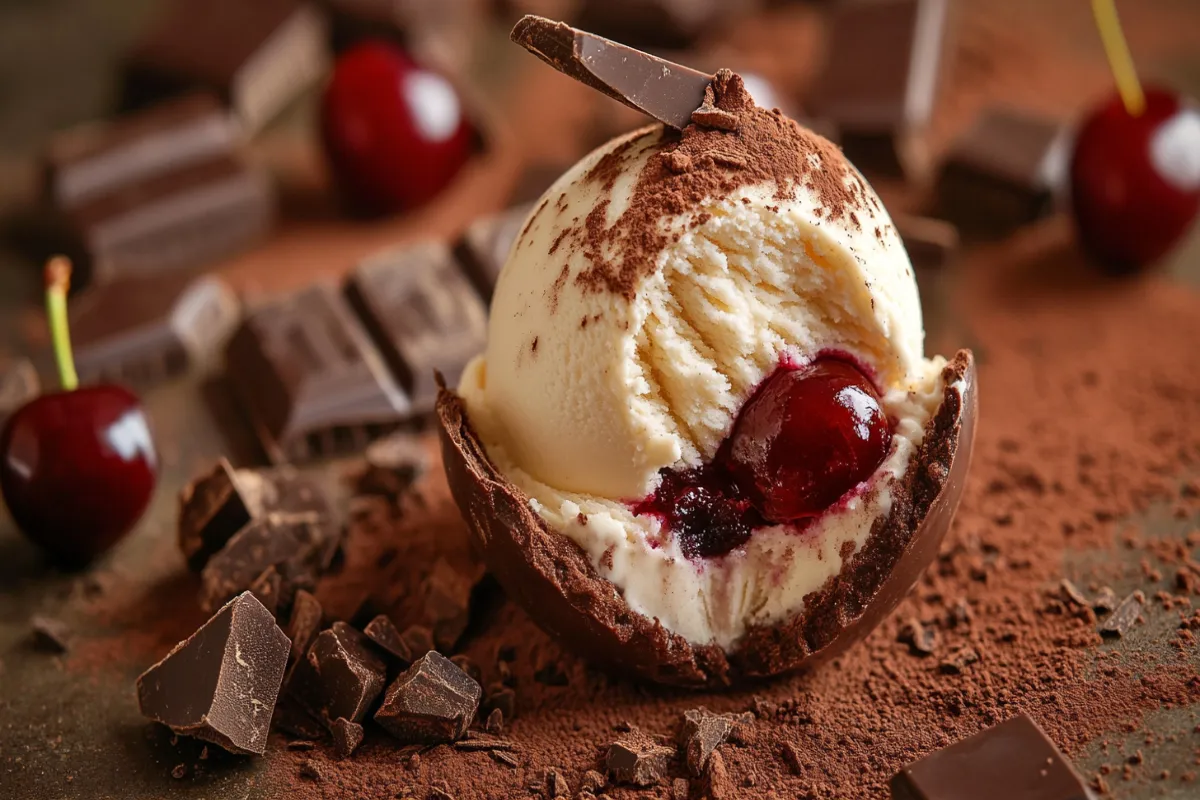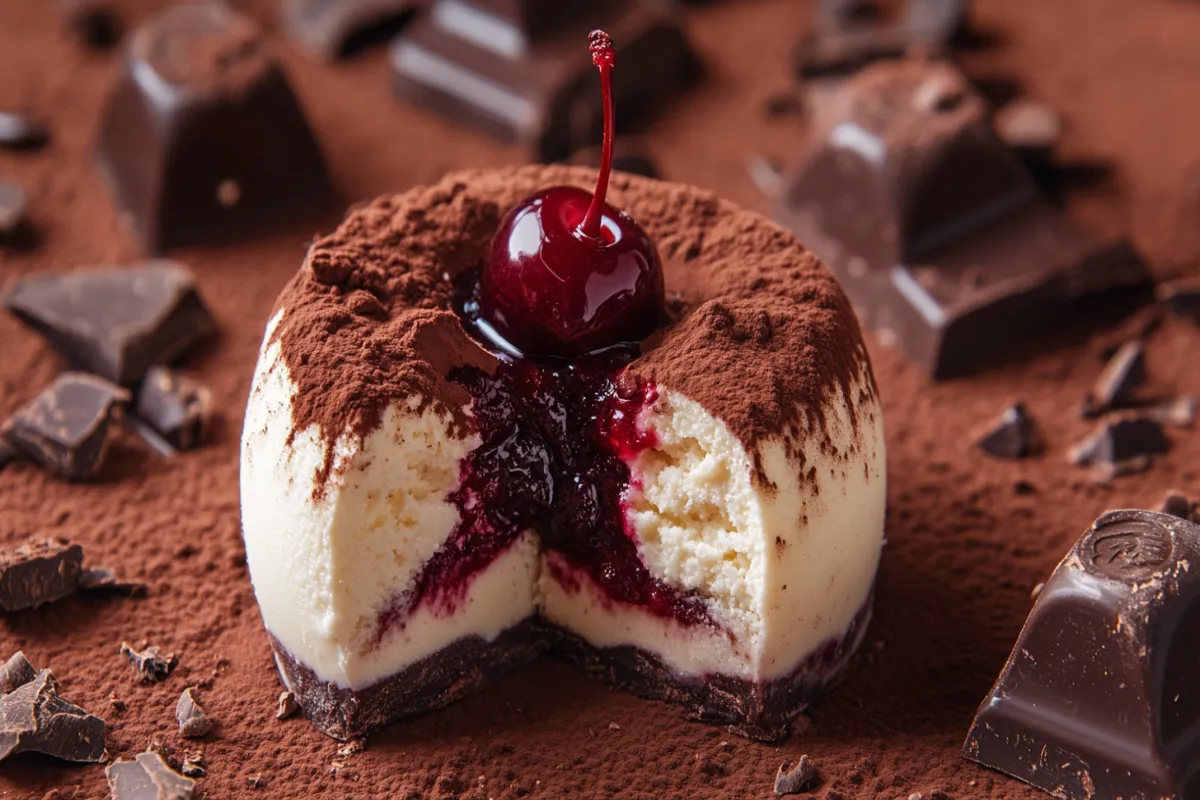Table of Contents
- Introduction: What Makes Tartufo Unique?
- Classic Tartufo Ingredients
- Ice Cream or Gelato
- The Surprise Center
- Chocolate Coating
- Additional Coatings and Garnishes
- Variations of Tartufo and Their Ingredients
- Tartufo al Cioccolato
- Tartufo al Limone
- Tartufo al Pistacchio
- How Tartufo Is Made: A Step-by-Step Overview
- How to Customize Tartufo to Your Liking
- Frequently Asked Questions (FAQs)
- Conclusion: The Art of Tartufo Creation
Introduction: What Makes Tartufo Unique?
Tartufo is a traditional Italian dessert cherished for its decadent combination of flavors, textures, and the surprise-filled center. Originating from the town of Pizzo in Calabria, Italy, it has become a classic treat worldwide. Typically, Tartufo consists of two flavors of gelato or ice cream shaped into a ball with a hidden filling at its core. To finish, it is coated in a hard chocolate shell, cocoa powder, or crushed nuts. This unique preparation makes it both visually appealing and a delight to taste.
This frozen treat goes beyond its ingredients; it is about the harmony of textures and flavors. As you slice into a Tartufo, layers of creamy gelato reveal a delectable center, often containing a maraschino cherry, chocolate ganache, or fruit preserves. Each element is chosen carefully to create a delicious contrast between the smooth ice cream, the chewy or gooey filling, and the crunchy coating.
In this article, we will explore the classic ingredients that make up Tartufo, dive into its various modern variations, and provide a detailed look at how this dessert is made. By understanding what goes into Tartufo, you’ll gain a deeper appreciation for this Italian specialty and learn how to customize it to your liking.
Classic Tartufo Ingredients
At its core, Tartufo consists of a few essential ingredients that blend together to create an exquisite dessert. Each component plays a crucial role in forming its unique flavor and texture:
Ice Cream or Gelato
The base of Tartufo is made from creamy, high-quality gelato or ice cream. Classic recipes often use two contrasting flavors to add depth to each bite. Common choices include chocolate and hazelnut, vanilla and strawberry, or coffee and chocolate. The richness and creaminess of the gelato are key, as they provide the smooth texture that characterizes Tartufo. If you opt for ice cream, ensure it’s dense and not overly aerated, as this will help the dessert maintain its shape.
The Surprise Center
The filling is what makes Tartufo truly special. This hidden core offers a burst of flavor that complements the outer layers of ice cream. Traditionally, fillings include:
- Maraschino Cherry: This sweet and tangy fruit is a classic choice, adding a delightful contrast to the creaminess of the gelato.
- Chocolate Syrup or Ganache: A rich chocolate center provides an indulgent surprise, enhancing the overall decadence of the dessert.
- Fruit Preserves: Raspberry or cherry preserves introduce a fruity twist, adding both flavor and color to the Tartufo.
When selecting a filling, consider how it will interact with the gelato flavors. For instance, a chocolate ganache pairs well with both chocolate and hazelnut gelato, while a fruit preserve can enhance lighter flavors like vanilla or lemon.
Chocolate Coating
The exterior of a traditional Tartufo is coated with melted chocolate that hardens into a shell. Dark chocolate is often preferred due to its rich flavor and ability to create a crisp contrast with the soft interior. Some variations use milk chocolate or white chocolate for a different taste. The coating not only adds flavor but also provides a satisfying crunch that balances the creaminess of the gelato.
Additional Coatings and Garnishes
For an extra layer of texture and flavor, Tartufo is sometimes rolled in coatings such as:
- Cocoa Powder: Dusting the Tartufo with cocoa powder gives it a slightly bitter finish, which complements the sweetness of the ice cream.
- Chopped Nuts: Crushed hazelnuts or pistachios add a nutty flavor and a crunchy texture, making each bite more interesting.
- Chocolate Cookie Crumbs: Some recipes call for crushed cookies to provide an additional layer of taste and a contrasting texture.
These classic ingredients are what define traditional Tartufo, but they can be adjusted and combined in different ways to create a dessert that suits your personal preferences.

Variations of Tartufo and Their Ingredients
While the classic Tartufo with chocolate and cherry is beloved, various delicious variations have emerged over time. Each brings its unique twist to the dessert, showcasing different flavor combinations:
Tartufo al Cioccolato
This variation is perfect for chocolate enthusiasts. Tartufo al Cioccolato is made with chocolate gelato for both layers and features a center filled with chocolate ganache or a chocolate truffle. To finish, it is coated in dark chocolate and often dusted with cocoa powder to intensify the chocolatey experience. For added texture, some versions include crushed chocolate cookies in the outer layer.
Tartufo al Limone
For a refreshing and tangy twist, Tartufo al Limone uses lemon gelato with a core of lemon curd or citrus syrup. Its tartness contrasts beautifully with the sweetness of the outer coating. Typically, it is coated in white chocolate and a sprinkle of powdered sugar, which enhances the citrus flavor. Adding a touch of lemon zest to the coating further brightens the dessert, making it an excellent choice for summer.
Tartufo al Pistacchio
Pistachio lovers will enjoy Tartufo al Pistacchio, which features pistachio gelato and a center filled with either chopped pistachios or pistachio cream. The outer shell is coated in melted chocolate and rolled in crushed pistachios, adding a nutty flavor and a delightful crunch. This variation beautifully showcases the rich, buttery taste of pistachios, making it a sophisticated option for special occasions.
Tartufo alla Nocciola
For a nutty experience, Tartufo alla Nocciola uses hazelnut gelato as its base and includes a core of chopped hazelnuts or hazelnut spread. The dessert is coated in milk chocolate and dusted with crushed hazelnuts, highlighting the nutty flavors throughout.
Each variation of Tartufo maintains the fundamental elements: a creamy gelato or ice cream base, a flavorful center, and an outer coating. However, the choice of ingredients allows for endless creativity. You can mix and match different gelato flavors and fillings to create your version of this classic dessert.

How Tartufo Is Made: A Step-by-Step Overview
Creating Tartufo at home may sound challenging, but it’s relatively straightforward with some preparation. Follow this step-by-step guide to make your own Tartufo:
Step 1: Prepare the Gelato Centers
First, select two flavors of gelato or ice cream. Scoop a small portion (about one tablespoon) of the first flavor onto a baking sheet lined with parchment paper. Create a small indent in the center and place your chosen filling, such as a maraschino cherry or a spoonful of chocolate syrup. Then, cover the filling with another scoop of the second gelato flavor and shape it into a ball. Repeat this process for each Tartufo you plan to make.
Step 2: Shape the Tartufo
Once you have formed the initial balls, use your hands to gently shape them into smooth spheres. The warmth from your hands will help soften the outer layer slightly, allowing you to mold it more easily. If the gelato becomes too soft during this process, place the balls back in the freezer for a few minutes to firm up before continuing.
Step 3: Freeze
After shaping the balls, return them to the freezer for at least 1-2 hours to ensure they are firm. This step is essential to prevent the gelato from melting during the coating process.
Step 4: Coat with Chocolate
While the Tartufo balls are freezing, melt your chosen chocolate (dark, milk, or white) in a microwave or over a double boiler. Allow the chocolate to cool slightly, ensuring it remains liquid but is not too hot. Remove the Tartufo balls from the freezer. Using a fork or skewer, dip each ball into the melted chocolate, turning it to coat evenly. Let any excess chocolate drip off before placing the Tartufo back on the parchment-lined baking sheet. For extra texture and flavor, roll the freshly coated Tartufo in cocoa powder, crushed nuts, or cookie crumbs immediately after coating.
Step 5: Freeze Again
After coating, place the Tartufo back in the freezer for at least 1 hour to allow the chocolate shell to harden fully. This step is crucial to achieving the characteristic crunchy exterior.
Step 6: Serve
When you are ready to serve, take the Tartufo out of the freezer and let it sit at room temperature for a few minutes. This softens the gelato slightly, making it easier to slice through and revealing the hidden center. For an added touch, you can dust the Tartufo with cocoa powder or powdered sugar before serving.
By following these steps, you can recreate this beloved Italian dessert at home. Each element—from the gelato base to the chocolate shell—adds its unique contribution to the final flavor and texture.
How to Customize Tartufo to Your Liking
One of the best aspects of Tartufo is its versatility. You can easily customize it by experimenting with different flavors, fillings, and coatings. Here are some ideas to inspire your creativity:
- Mix and Match Flavors: Try combining unusual gelato flavors like coconut and mango for a tropical twist or matcha and vanilla for a more subtle, earthy flavor.
- Experiment with Fillings: Swap out the classic maraschino cherry for fillings like caramel sauce, fruit preserves, or even peanut butter. Each filling offers a new flavor experience that changes the dessert’s overall taste.
- Play with Coatings: Instead of traditional dark chocolate, use white chocolate or milk chocolate for the outer shell. Add crushed cookies, shredded coconut, or colorful sprinkles to create a festive appearance.
- Incorporate Alcohol: For an adult version, try infusing the gelato or the filling with a splash of liqueur like Amaretto or Frangelico. This adds depth and complexity to the dessert.
By customizing your Tartufo, you can create a dessert that reflects your unique tastes while still honoring its Italian roots.

Frequently Asked Questions (FAQs)
What is the filling inside a traditional Tartufo?
The classic filling inside a Tartufo is usually a maraschino cherry or a dollop of chocolate syrup. However, other variations use fruit preserves, caramel, or nut-based fillings to suit different flavor preferences.
Can I use store-bought ice cream to make Tartufo?
Yes, store-bought ice cream works well for making Tartufo. Choose high-quality ice cream that is dense and creamy. This will help maintain the structure of the Tartufo during shaping and coating.
What type of chocolate is best for coating Tartufo?
Dark chocolate is commonly used for its rich flavor and ability to harden into a crisp shell. However, milk chocolate and white chocolate are also great options if you want to vary the flavor profile.
How long does homemade Tartufo last in the freezer?
Homemade Tartufo can be stored in an airtight container in the freezer for up to a week. For the best taste and texture, consume it within this timeframe.
Conclusion: The Art of Tartufo Creation
Tartufo is more than just an ice cream dessert; it’s an exploration of flavors, textures, and craftsmanship. By combining creamy gelato, a surprise center, and a crunchy chocolate shell, this Italian classic delivers a multi-layered tasting experience that delights every sense. While the traditional Tartufo includes a maraschino cherry or chocolate center, modern variations have introduced endless possibilities.
Creating Tartufo at home allows you to experiment with different flavors, fillings, and coatings. Whether you stick to the classic combination or develop your custom version, the joy of making and eating Tartufo is in its versatility and elegance.
Next time you are in the mood for a special dessert, consider making Tartufo. Not only will you indulge in a treat that captures the essence of Italian dessert-making, but you’ll also impress your guests with its beauty and flavor.

